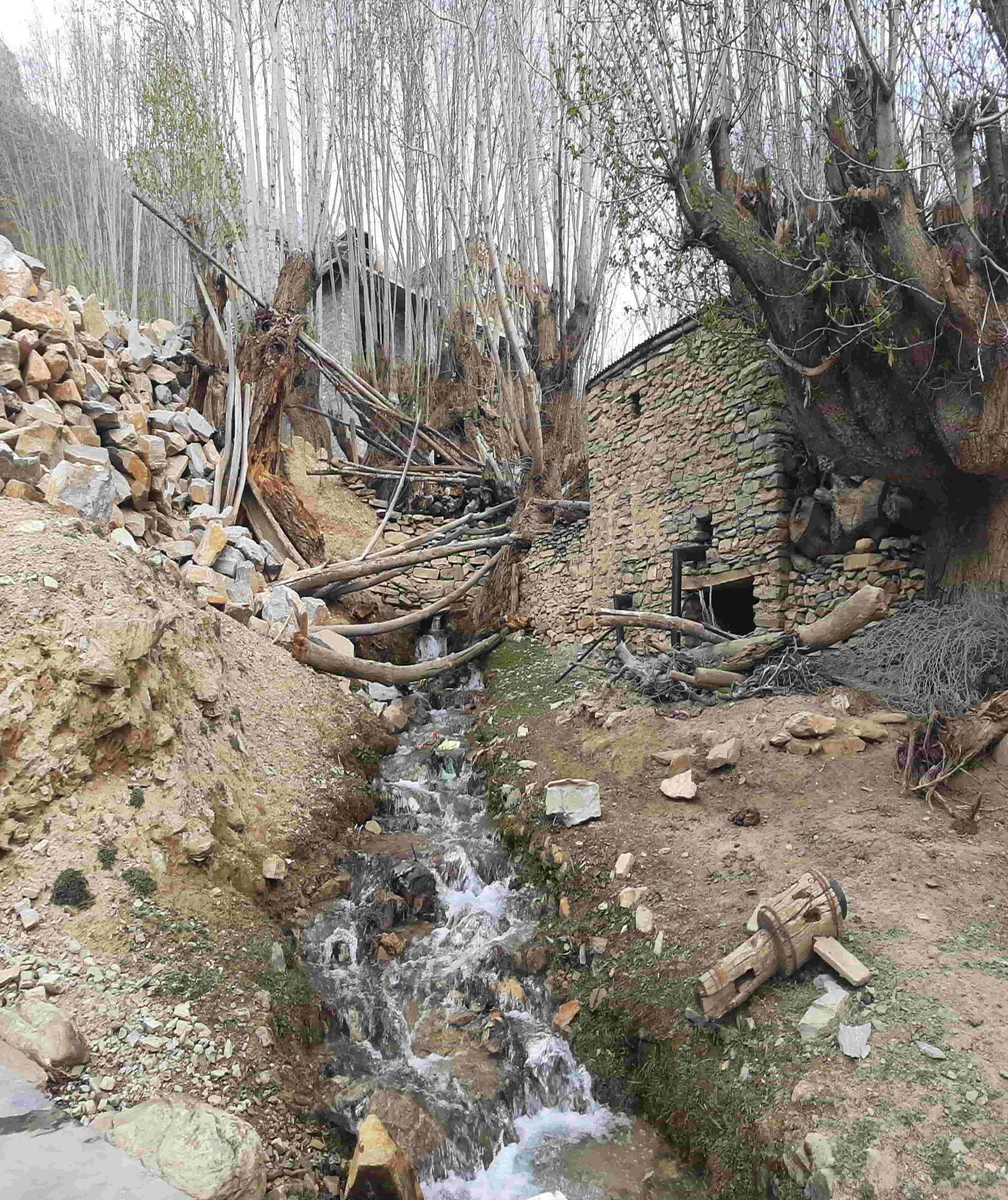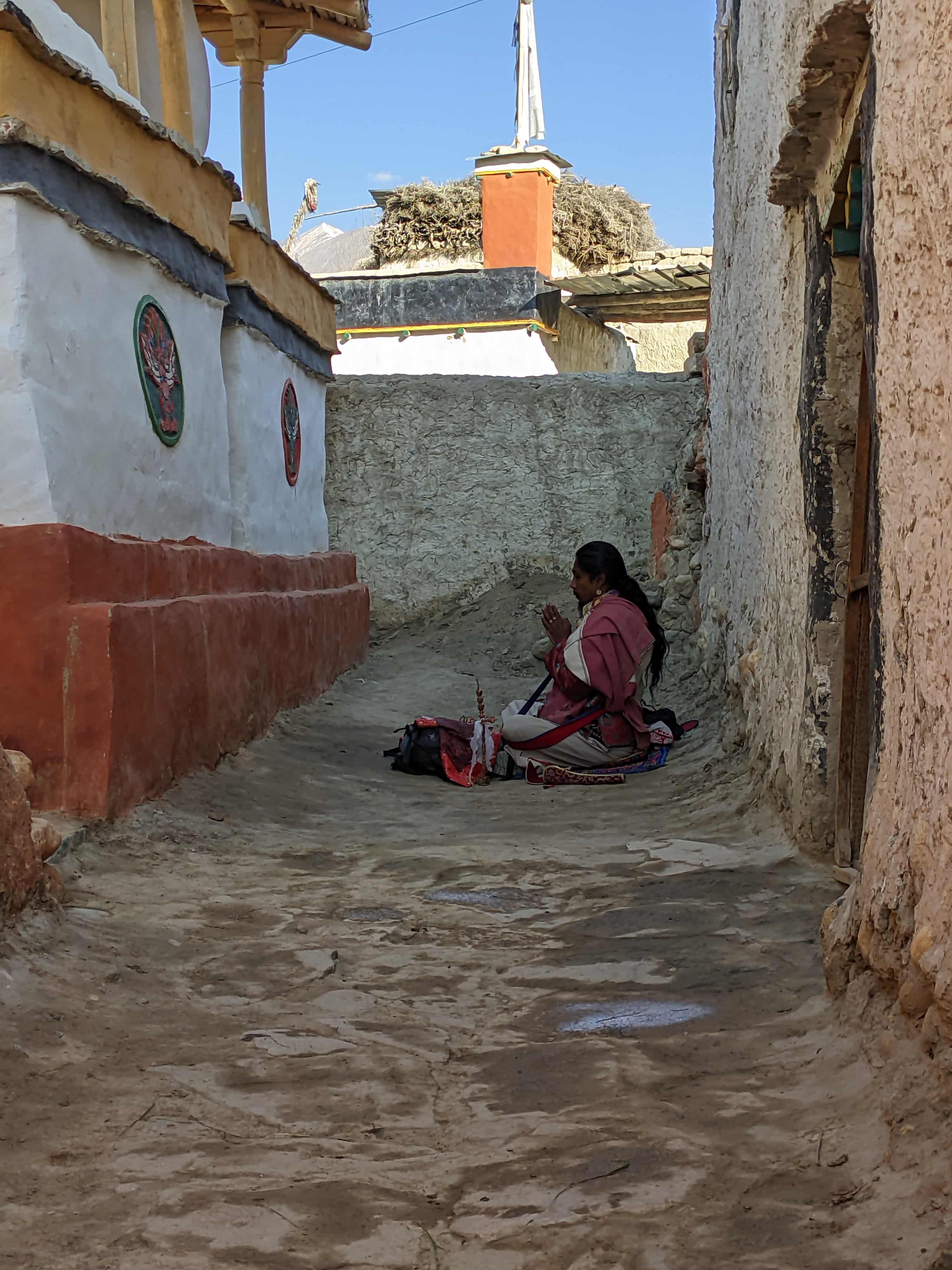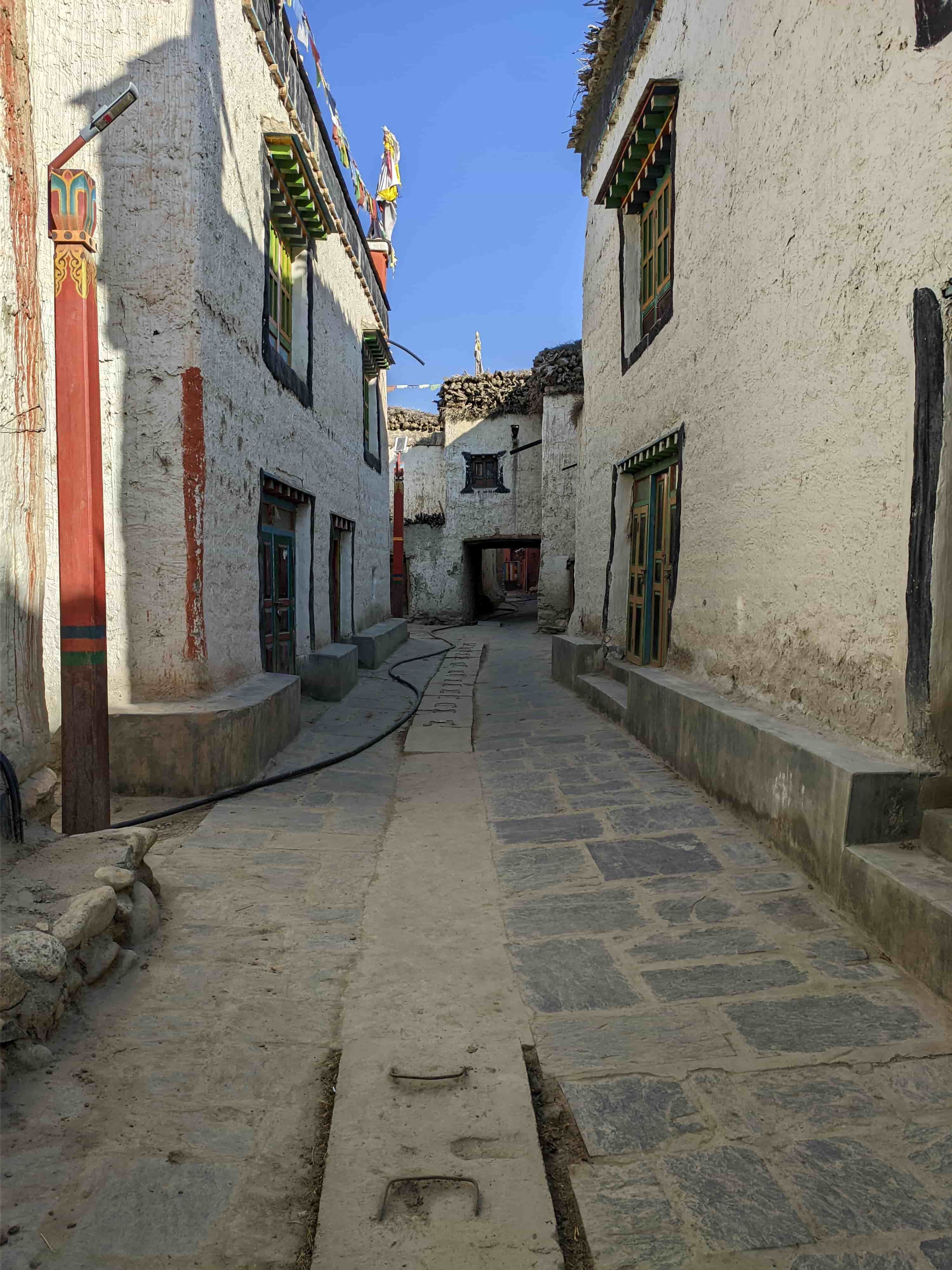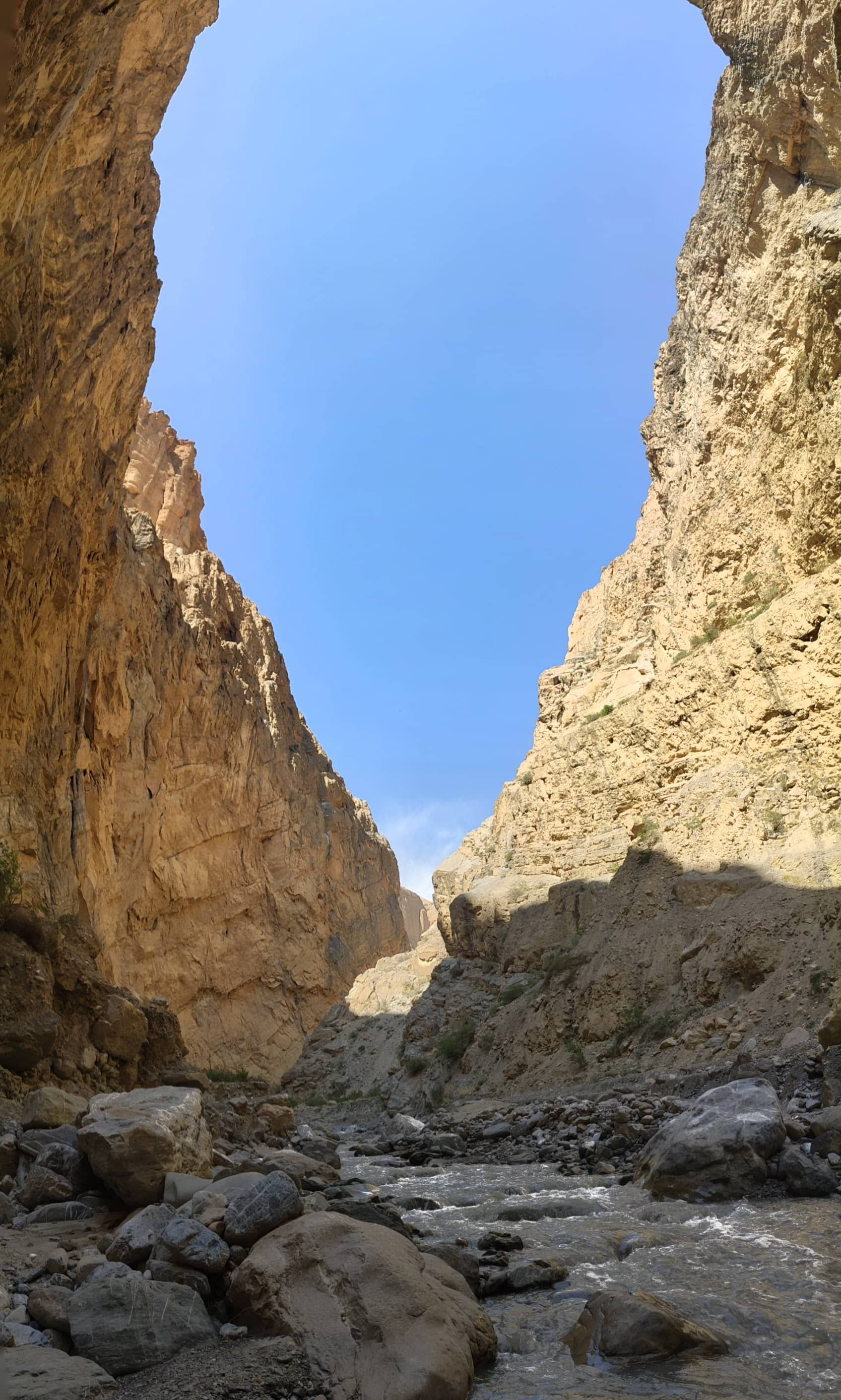Upper Mustang | Water Crisis | Water Solutions | Migration | Travelogue | depopulation

The wind stirs heavily across the barren landscape as our bus pushes along the stupendous apple farms in Marpha, following the dusty road leading north from Jomsom. Upon passing through Kagbeni, one enters the Upper Mustang (also known as the kingdom of Lo) region—a hidden Himalayan kingdom that was opened to the world only in 1992. As we travel upstream of the Kaligandaki river, the landscape becomes increasingly arid and rugged.
Yet, there is an ethereal beauty to this desert-like land. The Himalayas, always towered in the north, now start to transcend south. The great Kali Gandaki Gorge, considered one of the deepest in the world, separates Annapurna I and Dhaulagiri Himal. The wind-eroded cliff sides that glow in hues of red show a surreal landscape drawing visitors from around the globe.
Beyond the majestic mountain views, rural communities scattered across the region face pressing water challenges that affect their daily lives. From the trans-Himalayan highlands to villages nestled amid green terraces downstream, water troubles seem to escalate in the region.
After a two-day bus journey from Kathmandu, we arrived at our first stop, Samar – a small village consisting of only 10-15 houses. Such a small number of settlements was not always the case. “There used to be around 100 households in the past. When I was young, there were about 22 households, which has now reduced to around 12,” a middle-aged respondent, native to the village, shared the tale of depopulation.
During winter, the villagers in Samar and throughout Upper Mustang migrate either to Pokhara or Kathmandu to escape massive snowdrifts and freezing cold. However, the severity of these snowdrifts and cold temperatures has reduced significantly and have become more erratic as of 2025, making the winters capricious. The declining population and high migration, however, have allowed the villagers to enjoy an abundant water supply that is fed by Samar and Jhor rivers, which eventually converge into the mighty Kali Gandaki.
At the source of the spring, the villagers have constructed a storage tank in collaboration with the local government. Every year in May, they perform a ritual at these storage tanks to welcome the spring. Every household in this community has piped water installed in their home, and the community oversees the repair and maintenance of these infrastructures.
The next day in the morning, we set off toward our destination—the walled capital of Lo Manthang. Along the way, we laid over in Ghiling, Ghami, and Tsarang to further explore the management of water resources.
Ghiling, compared to Samar, inhabits almost double the households and is surrounded by what seems like a fort but actually is a temple. With the support of civil society organisations, each of the households had a metered water connection. The monthly payment would serve as a contingency in case the pipes or supply broke down. Ghiling has a separate committee formed to oversee repair and maintenance. Additionally, pipes were buried underground to prevent the freezing of the water in the winter.
Moving past Ghiling, we came across Ghami Village, the most urban-looking village in the Upper Mustang region after Lo Manthang, with a relatively higher concentration of houses. Embedded with many chortens (or stupas), an important religious monument in Buddhism that symbolises Buddha’s presence, the village also hosts shrines, paved roads, a continuous water supply through community taps, and several lodges and homestays. Ghami seems to be the first-choice stopover for anyone journeying toward Lo Manthang.
For anyone wishing to observe the striking red cliffs, eighth-century Gompas, habitat of Marmots and Yak herds and Blue Sheeps (Naur in Nepali language)—you will need to hike to a place called Dhakmar, which is some 4.3 kms away from Ghami. After wrapping up our surveys at Ghami, we kept moving forward on the journey to Lo Manthang before our last layover at Tsarang.
Tsarang seemed to be the most populous village, which had numerous chortens, old-age gompas, one big prayer wheel, and a Buddhist school. It is located at a crossroad which divides the roadway to two different places of historical and religious importance. Taking the left leads to the Lo Manthang, once the capital of the independent Kingdom of Lo.
The other route leads to Yaara, via which one can reach Damodar Kunda, a place of religious importance to the Hindus and with an abundance of Shaligrams, a fossilised stone or ammonite collected from the riverbed or banks of the Kali Gandaki.
While exploring Tsarang’s water management, a man working on renovation of a deteriorated building nearby the village told us that Kali Gandaki River originates from Tibet, and has four main tributaries—Daya, Di, Charang and Dhe, which are names of the rivers in local dialect.

Moving further, the path led us past chortens and ruined forts as we traced the upstream course of the Kali Gandaki River. Finally, we got a glimpse of the red and white buildings of Lo Manthang, the walled capital of the kingdom of Lo, crowning at a windblown ridge. The palace complex still stands, managed by a prince of the royal family.
As it was the time of Tiji festival, we had a hard time finding a place to stay in the area. The Tiji Festival is a grand cultural event attended by locals and foreigners from all around the world. This three-day auspicious event at Lo Manthang is a prayer for world peace and commemoration of victory of good over evil.
Moving past Lo Manthang lies Chhoser, a place of historical significance with a treasure repository of human caves, museums, monasteries, and chortens.
One will find people migrating from Rolpa in search of employment here. Continuing ahead, you'll arrive at Kora La, the Nepal-China border. Amidst the breathtaking Tibetan Plateau landscapes, you'll also notice a striking disparity in infrastructure development when you observe the buildings across the border.
Apart from the 14th-century temples and monuments, fluttering prayer flags, murmuring monks, and the fortification on the hills, modern amenities such as underground electricity wiring, fast Wi-Fi connection, and network connectivity will leave you astonished. You’ll still observe village taps with people queuing up with buckets and earthen pots.
"If it weren't for the ward chairperson, water scarcity would have profoundly impacted life here," said a local villager. "We used to rely on a single water source and faced shortages during peak tourist seasons. Although community taps were already in place, a single source was inadequate. The chairperson expedited the installation of additional water supplies to Lo Manthang, bringing drinking water from the hills above the Nepal Army barracks, approximately 15 km away," he further explained.
"Now, we have two different sources: a nearby spring and a river. The river supply doesn't freeze during winter, allowing residents who stay here in the winter to avail a continuous water supply."
According to the residents, families in Lo Manthang depend on public water taps, which serve almost 30 to 50 households. Water is available for about four hours each day. Although the number of families served by the community taps remains the same, the quantity of water they receive has increased, making the supply sufficient for daily needs.
The distance from the settlements to the sources of the water supply is similar across the villages we visited during the fieldwork. It takes two to three hours hiking for the villagers to reach the source of the water supply. Most villages have adopted sourcing drinking water from two or more sources located at different sites.

The arid climate in the region means winter snowmelt and glacier-fed springs are vital. But with climate change, patterns are shifting. Locals describe summers growing hotter and winters less snowy. Unfamiliar with the science behind climate change, the locals had their own meaningful hypotheses and explanations.
“We have started experiencing more rain recently. I don’t know if this is good or bad, but it didn’t snow last year. It is likely due to increased vehicular movement which has increased with the construction of roads that has led to a hot climate here” a villager from Samar shared his observation.
“We used to have mud roofs in the past to shed from the snow. Since the rains have started becoming intense, we have switched to tin and stone roofs”—this was a common response from some 100 respondents in the Upper Mustang.
“Younger generation increasingly migrates seeking jobs and education, and we are left with old people. Agriculture has largely ceased across most of the region. It has proven advantageous for the people still involved in farming though,” a respondent in Giling village told us.

Moving downstream, tales of water troubles continue.
In Chhusang, where the great Kali Gandaki gorge towers over the Narshing River concealing the Shaligrams, communities struggle with water disputes regarding irrigation, posing threats to the riparian rights of both the river and the people.
The Mukhiya irrigation allocation system, where water usage duration is assigned on a rotating basis throughout the month, has led to conflicts concerning inadequate and inequitable access. Kagbeni, perhaps the worst affected, faces the severest challenges—water scarcity during peak tourist seasons, conflicts over irrigation, sewages gushing into the river, and even disasters like flash flood which occurred in late 2023.
“We get water access for only a few days. Sometimes, fights break out because upstream users divert water from the canal before we get our turn in the downstream," a respondent from Chhusang sighed.
These ground-level observations are supported by the data from scientific studies. The Himalayan region of Nepal is undergoing a profound climatic shift, with rainfall increasingly replacing snowfall. In Mustang, one of the driest districts in the country, recent research shows a notable rise in precipitation, reversing decades of arid trends. Jomsom has seen a modest increase in annual rainfall.
While precipitation is increasing, it remains highly irregular, raising concerns over flash floods and water availability. During the 2023 flash flood in Kagbeni, the Jomsom meteorological station recorded more than half of the monthly average rainfall in just 24 hours.
Meanwhile, winter snowfall, traditionally crucial for water recharge, is declining across the country. The 2025 HKH Snow Update reports record-low snow persistence—23.6% below normal—marking it the third consecutive year of decline. National studies further indicate that winter precipitation accounts for only 5% of annual totals, much of it now falling as rain. Experts warn that these patterns threaten water security, agriculture, and disaster resilience, especially in fragile trans-Himalayan ecosystems like Mustang.

As we departed from Jomsom after exploring the timeless Mustang and its modern water struggles, one thing was clear: water troubles threaten both cultural heritage and the future of this region. While the current population migration trend appears beneficial for local residents with abundant water supply, it nevertheless poses a potential existential threat to this historically rich civilisation, particularly in villages where the concept of hotels, lodges, and homestays remains unfamiliar.
While local municipalities and communities have been collaborating to build piping, tanks, and public taps to expand access; issues that will likely persist includes water shortages, quality monitoring, climate change adaptations, irrigation conflicts, and disaster planning.
Strengthening communal bonds and sharing adaptive strategies could help write Mustang's next chapter.
[This travelogue is based on the author's graduate program fieldwork focusing on the status of management of water resources in the region though questionnaire survey and direct observations]
Read More Stories
Kathmandu’s decay: From glorious past to ominous future
Kathmandu: The legend and the legacy Legend about Kathmandus evolution holds that the...
Kathmandu - A crumbling valley!
Valleys and cities should be young, vibrant, inspiring and full of hopes with...
Visit visa probe committee faces crisis of credibility
A day after the government finally formed a high-level study and probe committee...